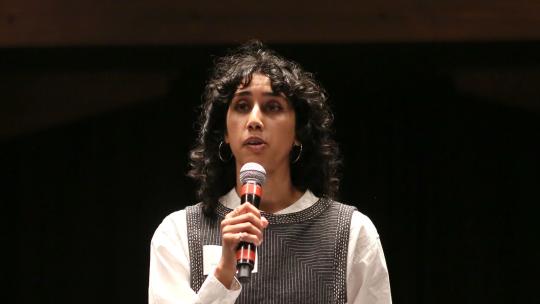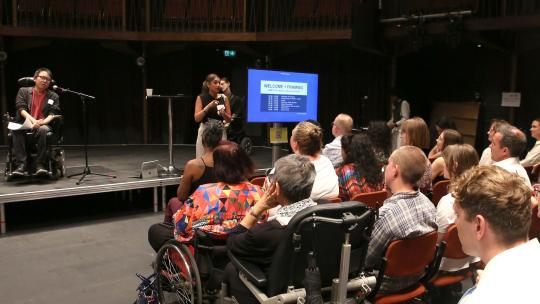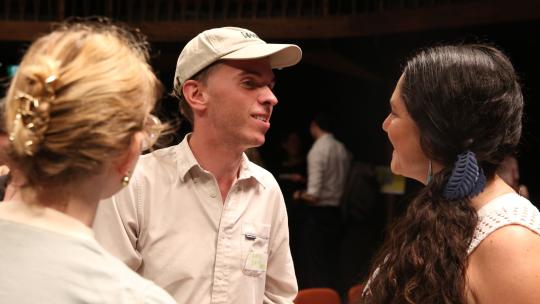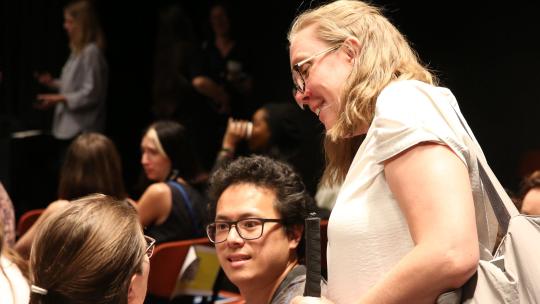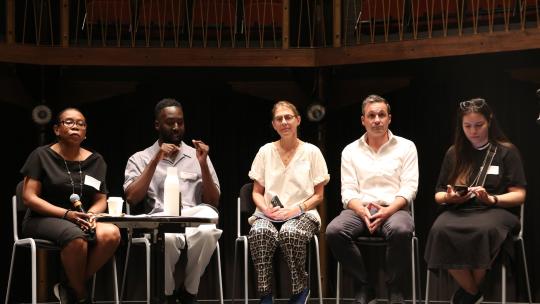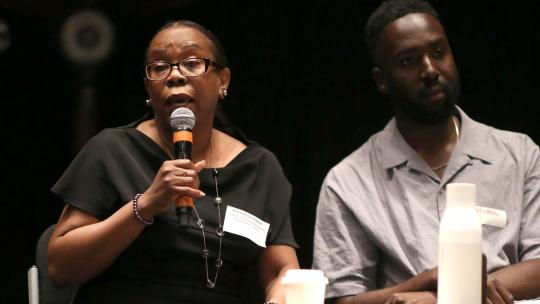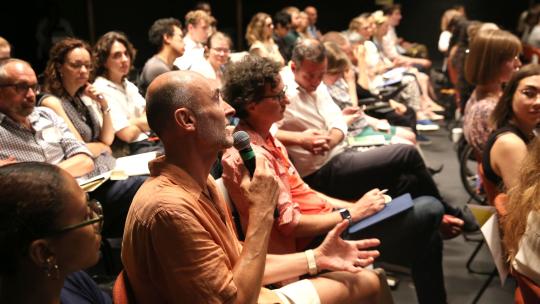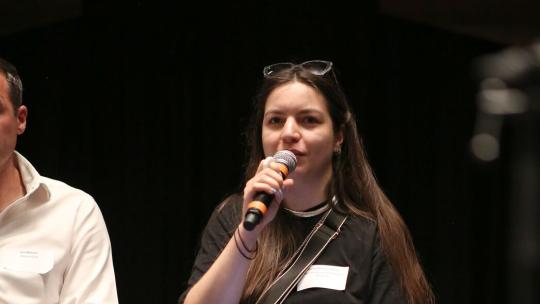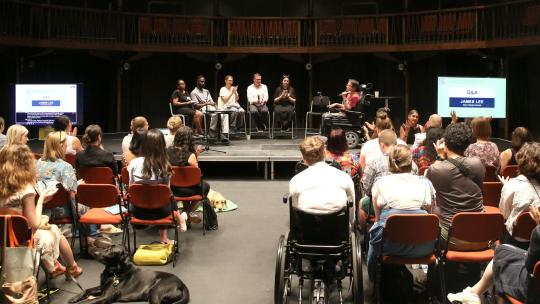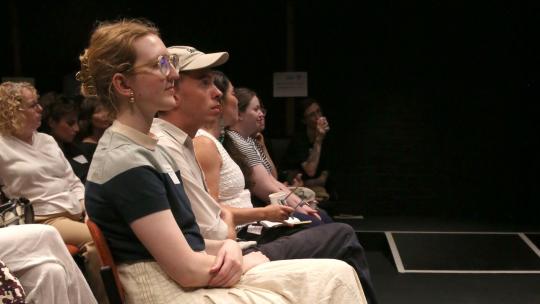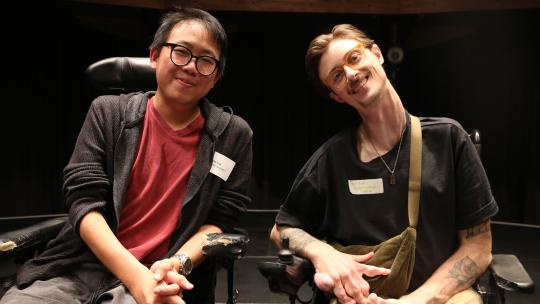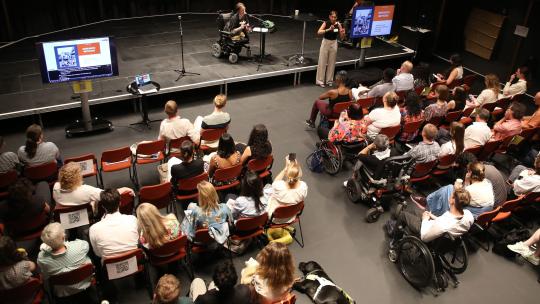Earlier this month, we launched the Designing with Disabled Experience report as part of the Good Growth by Design programme. This publication challenges how we approach access, inclusion and spatial justice in London’s built environment, centring the lived experience of disabled people as a foundation for more inclusive design.
The report draws together research, best practice and a rich exploration of designing with disabled experience, grounded in intersectionality and lived experience.
This is part of the Good Growth by Design (GGbD) suite of research and guidance published by the GLA to support the built environment sector to shape a better city by promoting quality and inclusion in the built environment.
A Call to Action
Opening the event, Ash Rao from the Greater London Authority’s Place Unit, emphasised the urgent need for inclusive design in a city as diverse as London. “Too often, disabled Londoners are underserved by the built environment,” she said, highlighting the report’s expansive definition of disability and its ambition to disrupt current design practices.
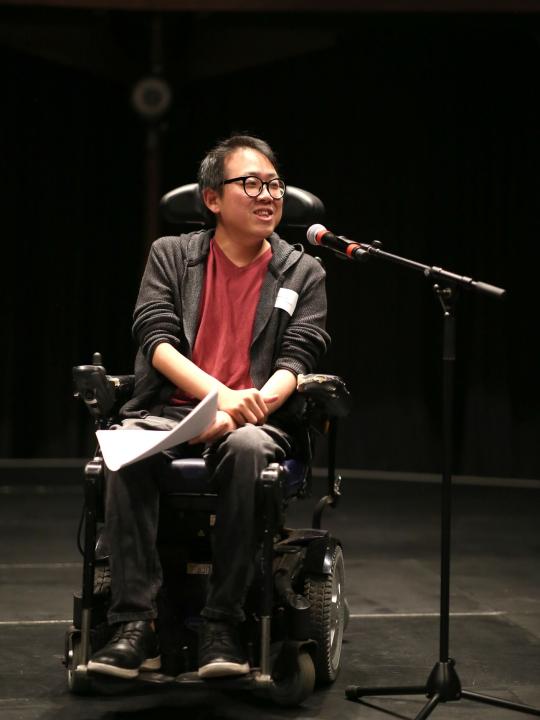
James Lee, part of the sounding board for the report and a Mayor's Design Advocate, chaired the event.
James Lee, chair of the event, part of the report's sounding board and a Mayor’s Design Advocate, grounded the discussion in his experience. He reminded attendees that despite years of investment, exclusion remains built into many of our public spaces. His message was clear: we must move beyond compliance toward genuinely enabling environments.
The Designing with Disabled Experience report
The report was written by Dis Collective and the team (Jordan Whitewood-Neal, James Zatka-Haas, Carly Dickson, Christopher Scarffe, and Marney Walker) described a collaborative, deep-dive approach to designing with disabled experience that moves beyond box-ticking exercises.
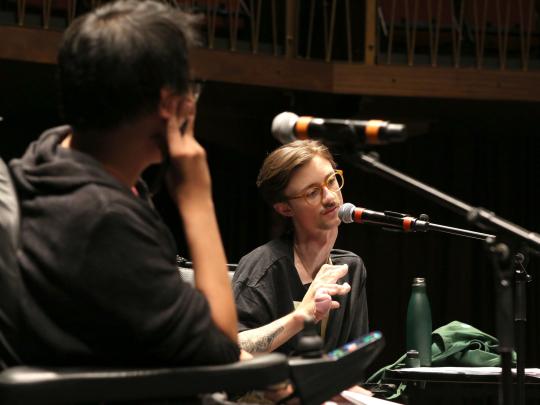
James Lee discusses the report writing process with Jordan Whitewood-Neal, a member of the research team.
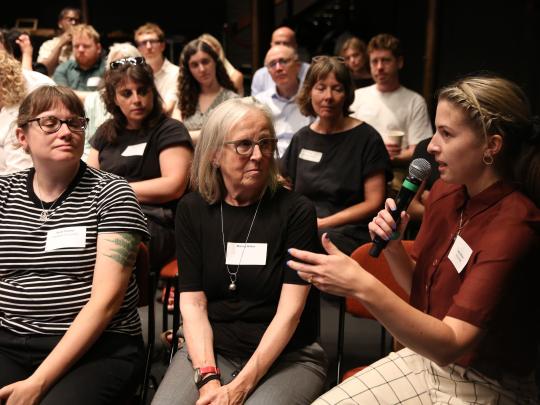
The report led to an open discussion with the audience, as Carly Dickson, part of the research team, answered one of the audience members questions.
The report is structured in three core parts:
- Why designing with disability matters: Sets the context, outlines the systemic inequalities and the imperative for change.
- Principles: Sets out 7 principles to address in projects and programmes, illustrated with case studies.
- Practice: Offers practical prompts for those designing, commissioning and maintaining spaces.
Rich case studies showcasing best practice, from co-designed playgrounds to built environment access panels, illustrated the transformative potential of designing with disabled people, not just for them. The inclusion of a living glossary further underscores the evolving nature of inclusive design language and practice.
Designing Through Experience: Case Studies in Action
A key segment of the event showcased rapid-fire case studies from designers and advocates working at the frontline of inclusive practice:
-
Chris Laing (Deaf Architecture Front) introduced Silent Buttons, a short film that captures the everyday barriers Deaf people face. He challenged the notion that cities are built for all, calling instead for design that begins with Deaf experience.
-
Rita Adeoye highlighted the London Legacy Development Corporations Built Environment Access Panel, which has helped shape inclusive developments across the Queen Elizabeth Olympic Park and surroundings. The panel brings lived experience to the design process and highlights how community voices can hold decision-makers to account driving excellence, not just compliance.
-
Ed Warner (MotionSpot) presented inclusive design guidance tools like the Regeneration Inclusive Design Overlay and Publica’s principles, co-developed with disabled people and already influencing practices across the built environment sector.
-
Deborah Gundle from Fairplay, shared the powerful story of co-designing one of the UK’s first fully inclusive public playgrounds. She emphasised that inclusion in play spaces is a necessity, not a luxury.
-
Luisa Pereira Pires (Neurodiversity Architecture Network) spoke about transforming architectural education and practice to better support neurodivergent professionals. Her toolkits and advocacy show how institutional change can begin from within the profession itself.
These stories brought the report’s ideas to life, offering tangible examples of what inclusive design can look like when it’s informed by lived experience.
Moving from Reflection to Action
The final panel discussion and Q&A session underlined the appetite for applying the report’s lessons in context. Jordan Whitewood-Neal offered a reminder: “Spatial justice isn’t just about access, it’s about how space itself can disable.” He called for action that addresses structural injustices like housing inequality and welfare cuts alongside design practice.
Speakers discussed the importance of embedding inclusive thinking early in project timelines, challenging traditional resource allocations and measuring impact meaningfully. Carly Dickson pointed to the need for consistent questioning and reflection throughout the design process, not just at the start.
Attendees also asked how the team selected contributors to the report. The answer: by prioritising breadth of lived experience over rigid definitions. This inclusive, non-prescriptive approach mirrors the report’s values and ensures more nuanced insight.
Looking Ahead
James Lee closed the event with a reminder that this report is just the beginning. The work of designing with disabled experience must be collaborative, continuous, and embedded structurally, not left to individual initiative or voluntary effort.
If we want cities that truly work for everyone, we must treat lived experience as expertise, build inclusive processes from the outset, and reimagine how design can serve justice, not just compliance.
Read and download the full report here:
Please note: we are working on a BSL translation of the report, which will be added to this page shortly.
